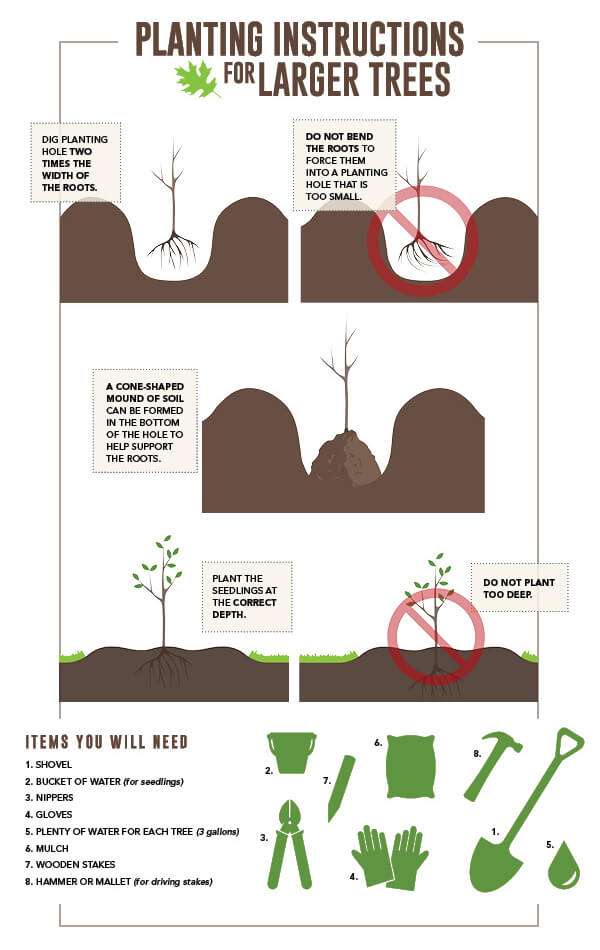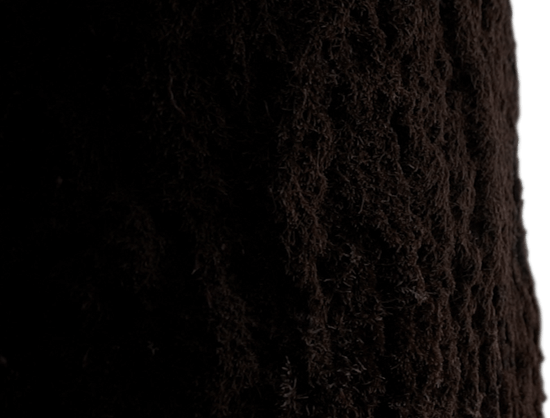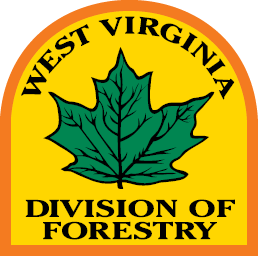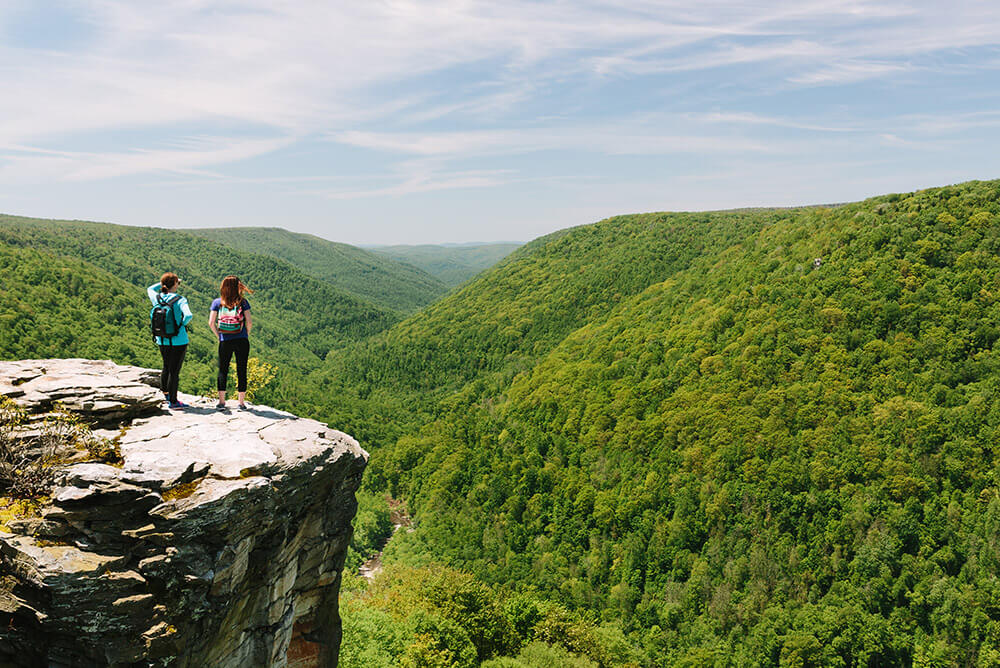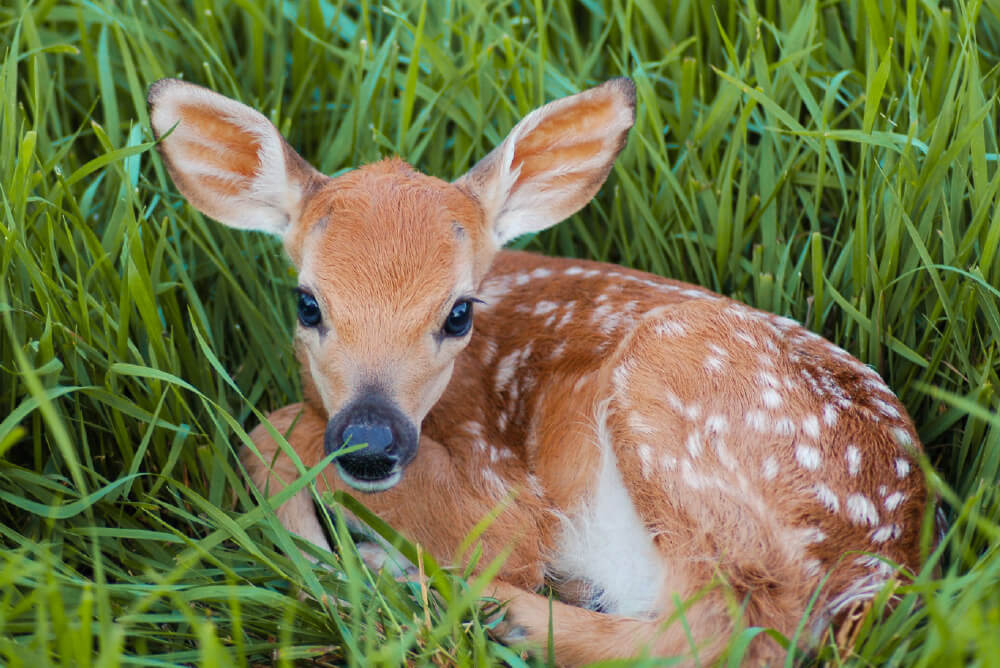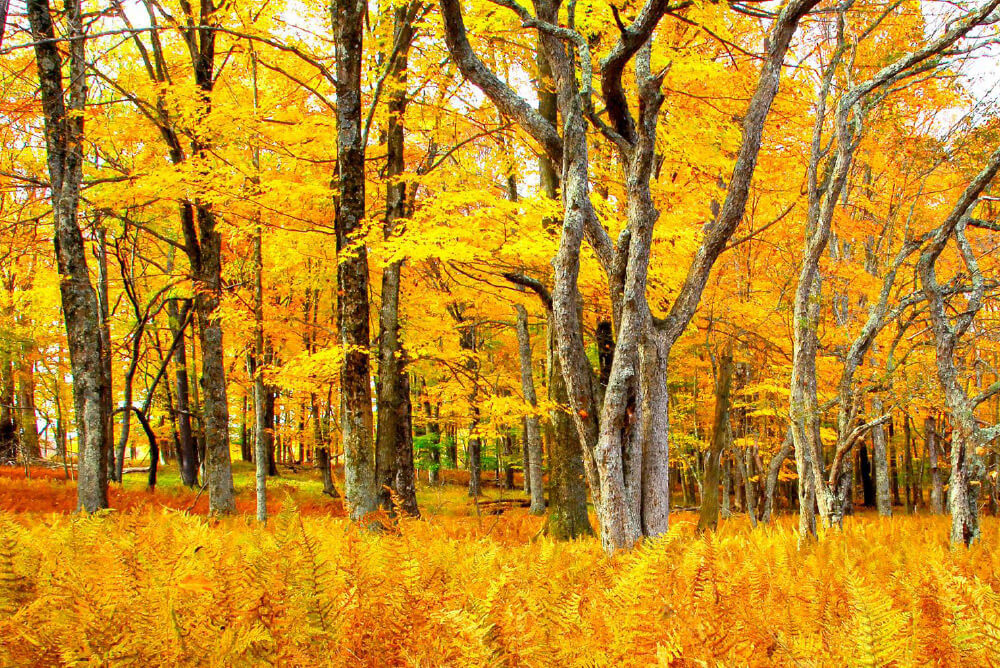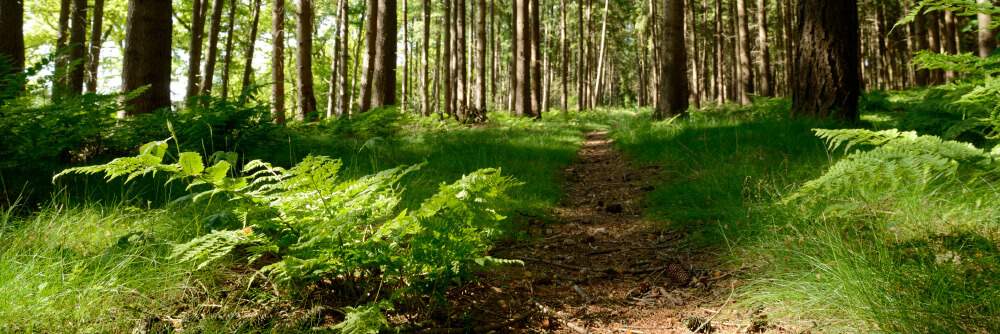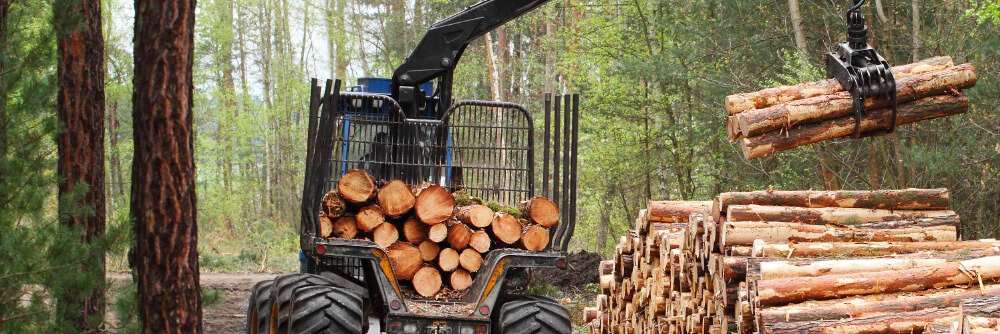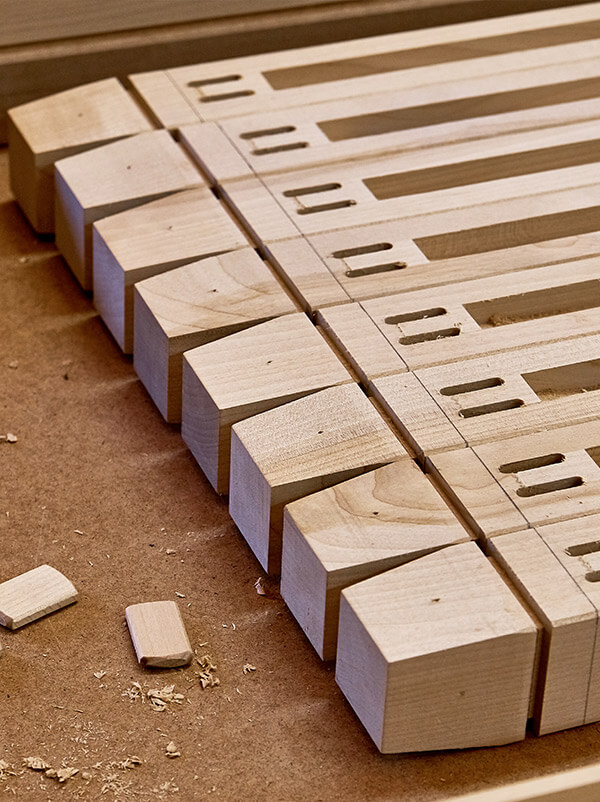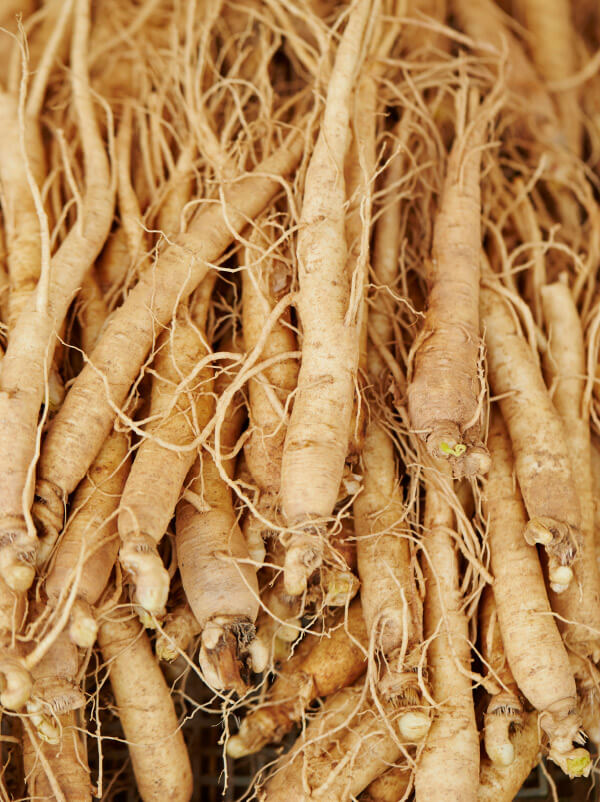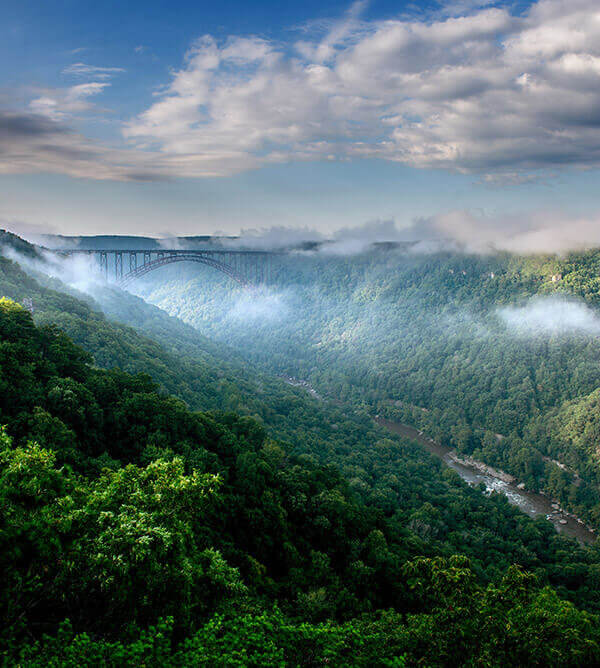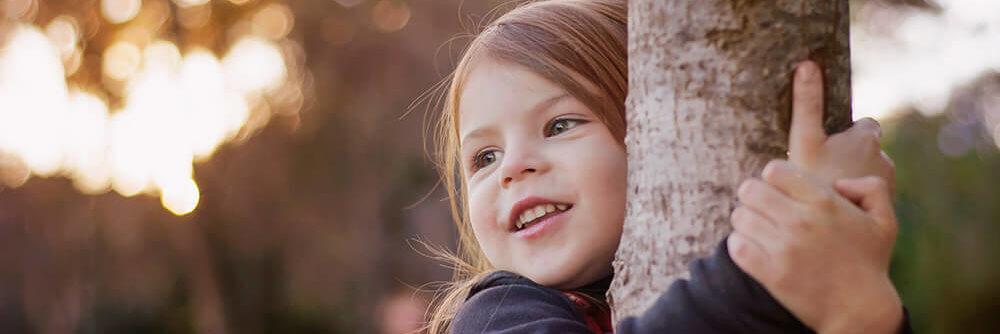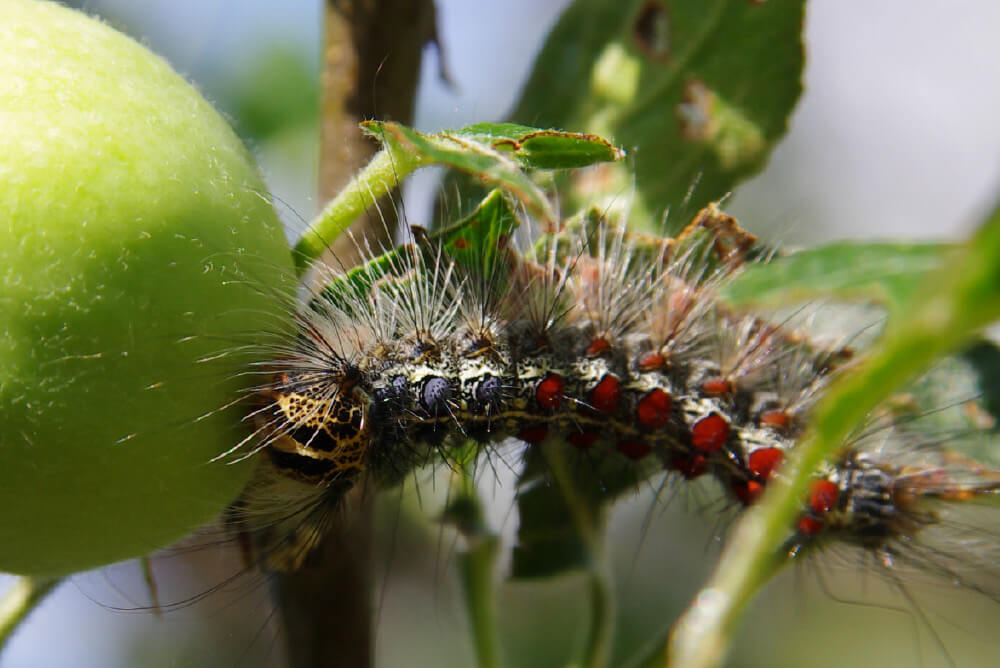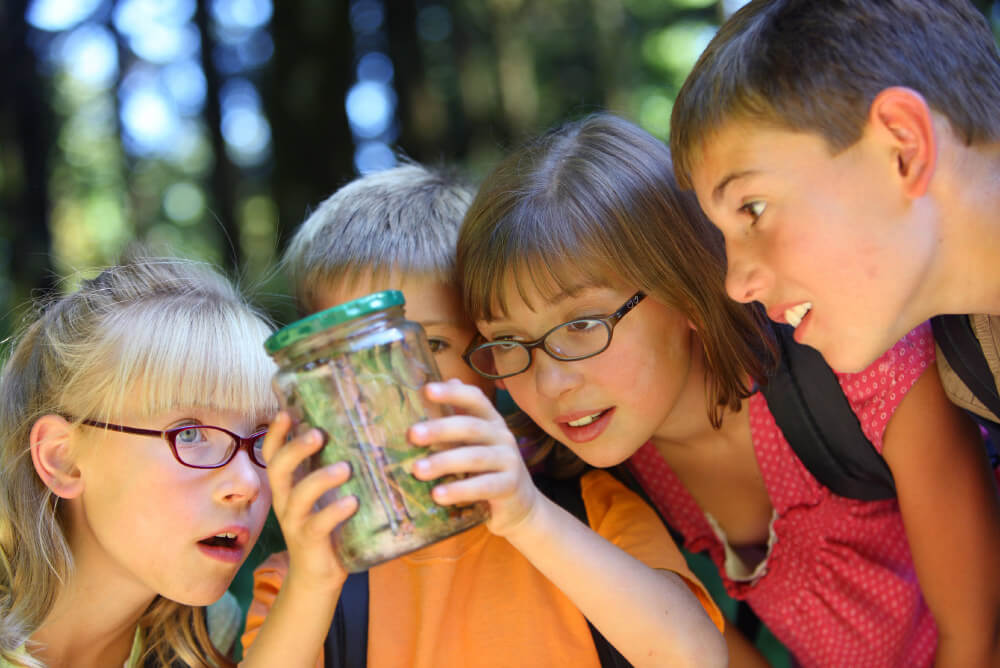Planning before Planting
It’s important that you properly plan your urban forest first in order to ensure the greatest chance of success. Location, planting timing and tree species are all important aspects of your plan.
Planting Site Design Tips
- Incorporate trees into designs for roadways, sidewalks and parking lots. For maximum benefit, create continuous planting strips (tree lawns) between the sidewalk and roadway that are at least 6’ wide.
- Keep trees at least 40’ from intersections, road signs and traffic signals.
- Do not plant trees with a mature height >25-30’ under or near overhead utility lines.
- Find out the mature height and spread of your tree and make sure the planting site is large enough to accommodate future growth.
- Pick sites with ample soil moisture and good soil quality and volume. A healthy root system will spread farther than the branches.
- Construct sidewalk cutouts and planters to maximize tree rooting area. A minimum of 6’ x 6’ is needed for a small or medium tree.
Unsuitable Planting Sites
- Presence of overhead utility lines, except when planting trees <25’
- Sites with highly compacted soils
- Sites with high exposure to vehicle exhaust
- Sites with underground utility lines or pipes
- Sites within 40’ of an intersection, road sign or traffic signal Sites within 20’ of a building foundation
- Sites in close proximity to entryways
Planting Tree Selection Tips
- Find out the mature height and width of your trees and make sure the planting site is large enough to accommodate future growth.
- Do not plant large maturing trees (>30’ high) under or near overhead utility lines, near buildings or roadways, or in areas of restricted soil space. A healthy root system will spread farther than the branches. Large tree species need large areas to grow.
- Consider all aspects of the tree at maturity: tree function, maintenance, denseness, purpose, etc.
- Select vigorous local nursery stock with one central leader and no visible signs of insect, disease or physical damage
- Select native species if possible
Consider the existing trees and strive for diversity within your selection if possible - Avoid species with disease susceptibility or poor growth habits
Find more information on choosing the right tree for your space, plus specifications on recommended tree species in our Trees for Urban Landscapes pdf.
Planting Season Tips
- Plant in the late fall and again in the early spring.
- Shipping and planting of bare root trees should only occur when the seedlings are dormant.
- Plant seedlings before bud break. Planting seedlings after bud break, caused by exposure to warm temperatures, will result in decreased survival rates.
- Plant seedlings immediately upon their arrival from the nursery. If this is not possible, the bundles can be stored for several days in a cool, dark place. Do not unpack the bundles!
- Water the bundles periodically to ensure the roots are well moistened. It is critical that the roots never be allowed to dry out; exposure to the air for even a few minutes can kill your seedlings. Trees that are not planted within several days of delivery should be heeled-in. Heeling–in is the temporary planting of seedlings by covering the roots and lower portions of the stems with moist soil.
Steps for Succesful Planting
- If possible, unpack and plant seedlings immediately. If you cannot plant seedlings immediately, store the bundles in a cool, dark place and water the bundles periodically to ensure the roots are well moistened.
- Dig a hole at least twice as wide and only as deep as the root system.
- You may need to prune off dead or excessively long root tips. Always use clean, sharp pruning shears.
- Spread the roots out so they are evenly distributed in the planting hole. A cone shaped mound of soil can be formed in the hole to help support the roots.
- Do not bend the roots to force them into a planting hole that is too small.
- It is very important to plant the seedlings at the correct depth. The upper roots should be just under the surface of the soil. Do not plant too deep.
- Place the soil back in the hole and gently tamp to remove any air spaces. Roots should not be exposed above ground.
- You will need to provide a deep soaking watering for each seedling at the time of planting and once each week for the first two growing seasons. Lack of water is the number one killer of newly planted trees!
- Mulch seedlings to a depth of 2″ to 3″ in an 18″ diameter circle around each trunk. Maintaining adequate mulch increases growth and vigor while reducing damage from mowers and string trimmers.
- Do not make mulch deeper than 3 inches. Excessive mulch leads to root problems.
- Do not allow mulch to be in direct contact with the trunk. This can promote the growth of decay causing agents.
- Seedlings will need very little pruning, if any, at the time of planting. Only dead, damaged or diseased branches should be removed.
- Do not “shape” or attempt to balance the branches to the root system. Reducing the leaf area will only further stress the trees and reduce the capacity for growth.
- Do not add fertilizer or other soil amendments. Fertilizer is not tree food! Fertilizer can often do more harm than good.
- Your seedling will probably not need to be staked. If support is needed, place wooden stakes on opposite sides of the tree and support with wide, flexible material. Do not use wire or other rigid material. The seedlings must be able to flex to promote strong trunk development.
